Crepe myrtle is a beautiful shrub that’s known for its bright-colored, long lasting blossoms. Crepe myrtles come in different sizes, habits, and colors. Popular blooms include pink, white, red, watermelon red, and purple. With their elegant stature, these shrubs have noteworthy exfoliating bark. Not only do crepe myrtles tolerate poor and dry soil, but they also bloom lavishly during summer.
Crepe myrtles are a low-maintenance choice for any property. Anyone can easily propagate these ornamental shrubs. Here are a few tried and tested methods on how to propagate crepe myrtle shrubs. One method might work better for some gardeners while another method might be easier for some.
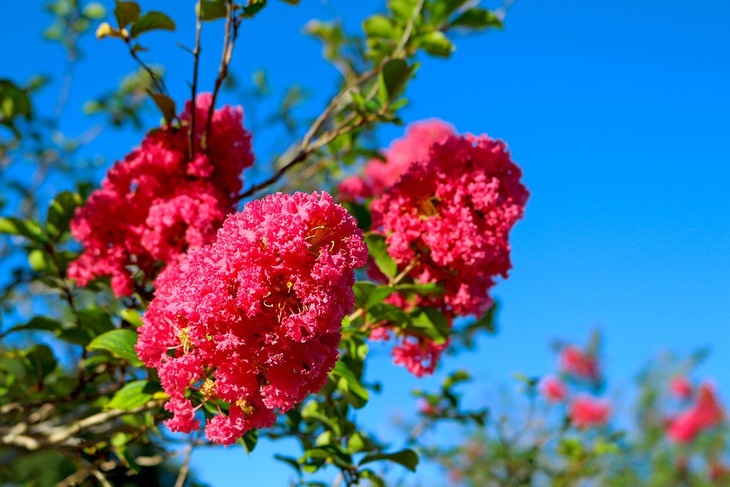
Prized for its abundance of beauty, this pink crepe myrtle blooms for months
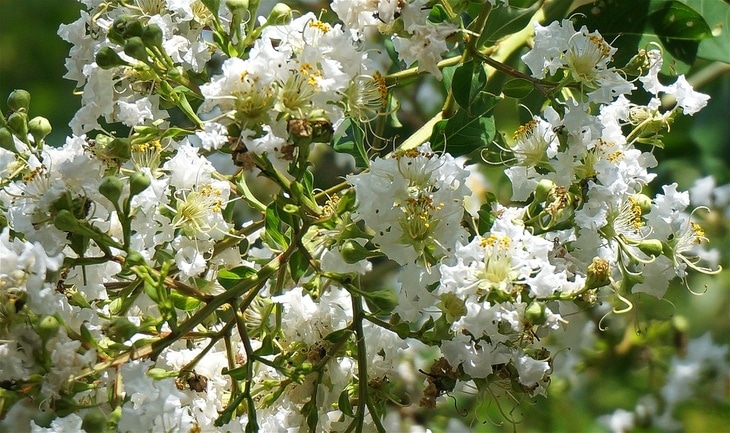
White, red, pink and purple crepe myrtles are said to bloom longer
1. Propagating Crepe Myrtles By Cutting
Cutting is said to be the easiest way of propagating crepe myrtles. Both softwood and hardwood cuttings can be used in this method of propagation. Softwood cuttings work best in summer or spring, but they are also good any time of the year. On the other hand, hardwood cuttings work best in late fall. Be sure to use clean pruners or knives when cutting to avoid infecting your cuttings.
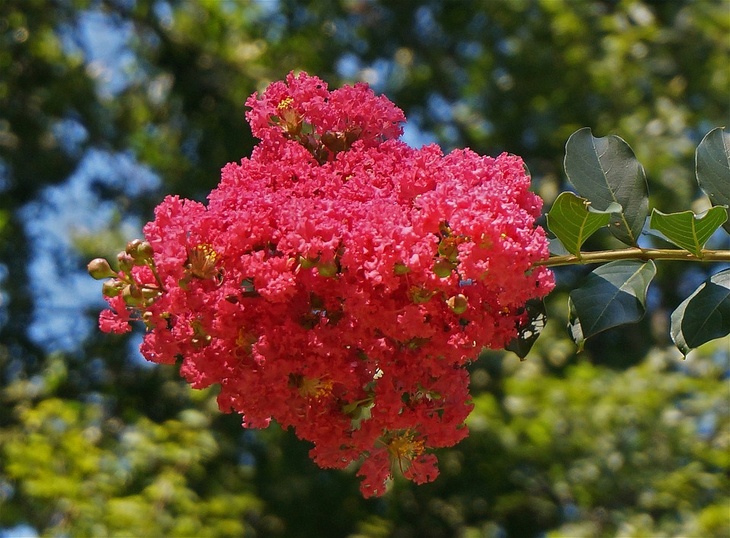
Showy, yet tender crepe myrtles are displaying huge clusters of blooms
Here Are The Things You Need
- Pruning shears
- 8-inch-deep pot
- Potting soil
- Perlite
- Peat
- Bucket
- Large clear plastic bag
- 0.1% rooting hormone/indolebutyric acid (IBA)
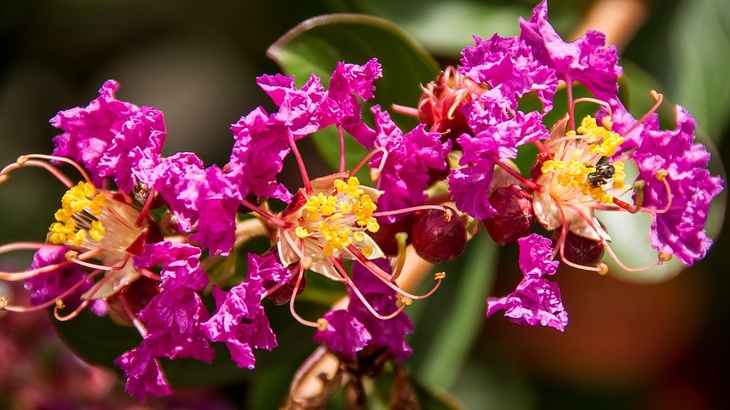
Crepe myrtles are low maintenance flowers, but they give loads of bloom all summer
Step By Step Instructions
1. Mix the same amount of perlite and peat moss (milled) in one bucket, then cover the mixture with water and soak for one hour. When the peat already plumps up, you can now drain the water.
2. Pack the mixture in an 8-inch deep pot. Expel the excess liquid by pressing the surface, and then dig a 4-inch deep hole in the center.
3. From the tip of a healthy crepe myrtle branch, cut an 8-inch long stem with plenty of leaves. Pick a stem with 1 quarter to 1/3 inch diameter. Avoid stems with buds or flowers.
4. Using pruning shears, part the stem right below a set of leaves. Get rid of an inch growth from the end of the cutting and make the cut straight across. Discard the leaves from the bottom half of the stem.
5. Press the parted end of the crepe myrtle stem into 0.1% rooting hormone (indole butyric acid). Remove any residue caked-on powder by lightly tapping the stem.
6. Plant and press the coated end of the stem into the hole you prepared on the pot. The lowest remaining set of leaves should rest above the surface.
7. Put the pot of the crepe myrtle stem outdoors in a shaded location away from direct wind and sunlight. To create a humid environment, cover it with a clear plastic bag.
8. Using a garden hose or watering container, water the crepe myrtle’s stem when the peat is scarcely moist. It’s best to pour water around the pot’s outer edge to encourage lateral root formation.
9. How to propagate crepe myrtle effectively is to make sure you mist the stem cutting once a day using a misting bottle. This will keep its leaves from drying out.
10. In two months, gently tug on the base of the stem to check for roots. When the stem has already grown roots, remove the clear plastic bag. Minimize watering this time by only pouring water on it when the top of the peat feels dry. This is to prevent damage to the new roots.
11. Two weeks after the stem have rooted, transfer the crepe myrtle to an 8-inch deep pot with potting soil on it. Grow the plant under a shaded area with just an inch of water per week until it grows significantly.
12. Transfer the crepe myrtle in an area under direct sunlight for a week prior to planting it in your garden. It’s best to plant it in a well-draining bed with mild acidic soil. If you’re planting multiple crepe myrtles, space them 15 to 20 feet apart. This is how to propagate crepe myrtle easily.
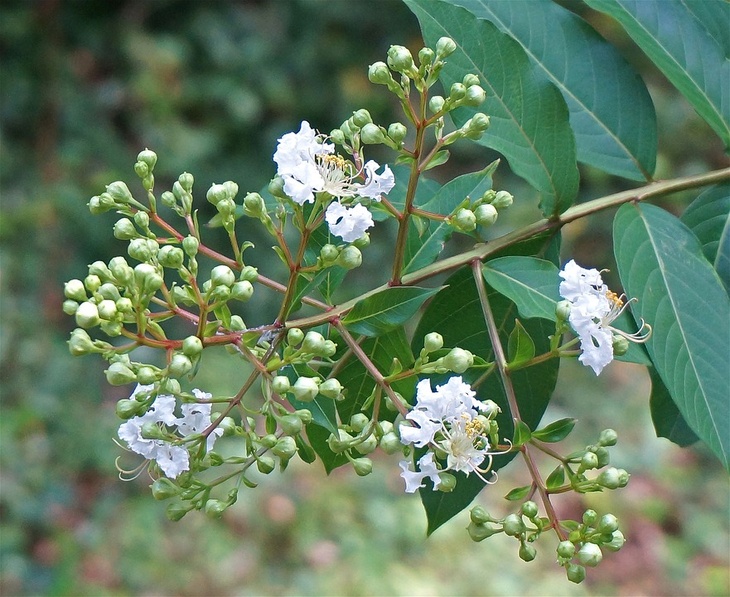
Newly blossoming pretty flowers of a white crepe myrtle shrub
2. Propagating Crepe Myrtles By Seed
You can grow crepe myrtles from seed. The berries that crepe myrtle shrubs produce become seedpods. When the seed pods are dried, they become seed capsules, and they get ripe during fall. The ripe seed pods are harvested for spring sowing.

After the crepe myrtles bloom in summer, they produce seed pods that last through the fall
Here Are The Things You Need
- Glass jar
- Bowl
- Potting soil
- Quart-sized pots
- Sphagnum peat moss
- Seed starting medium
- Clear bag, gallon size
- Spray bottle
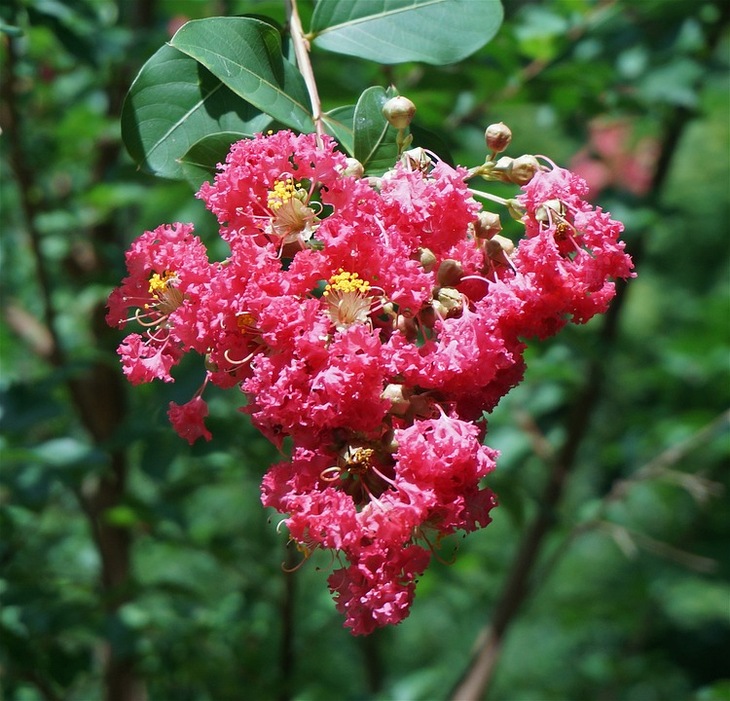
Lush green leaves and heavy cluster of crepe myrtle flowers
Step By Step Instructions
1. Check your crepe myrtle shrub in the fall and look for dry, black or brown clustered seedpods. Pinch the seedpods so that the disk-shaped seeds come out. Prepare a bowl so that the seeds fall into it. Put the seeds in a glass jar to be stored in a cool, dry place over the winter season.
2. Fill quart-size pots with potting soil mix and moisten it with a spray bottle. Make sure the soil is damp.
3. In the spring, you may plant the seeds. In about ¼-inch deep, plant two seeds into the center of every pot. Lightly cover the seeds with an inch or half an inch deep of sphagnum peat moss. Make sure not to pack down the moss. Thoroughly moisten the moss on top by spraying it using a mist bottle. This is an important part on how to propagate crepe myrtle.
4. Place the pots in a sunny window and cover them with a clear plastic bag to retain moisture in the soil. The seed will germinate in about 2 to 3 weeks. Using a light mist, spray the soil when it begins to dry. This is an essential part on how to propagate crepe myrtle.
5. Get rid of the clear plastic covering when the seeds have grown to 2-3 inches tall. You may now water them regularly as needed so that the soil remains damp in about 4 to 6 weeks until the plants are 1 foot in length.
6. Transfer your crepe myrtles outdoors to a mildly sunny location with afternoon shade. Keep watering and caring for the plants in pots until they’re ready to be transplanted in early to mid-summer, or fall.
7. Plant your crepe myrtles into a well-drained acidic soil, in a shaded location. Plant them as deep as they sit in the container. How to propagate crepe myrtle successfully requires vigilant watering of the plants, especially if they’re transplanted during summer. This is to make sure they don’t dry out.
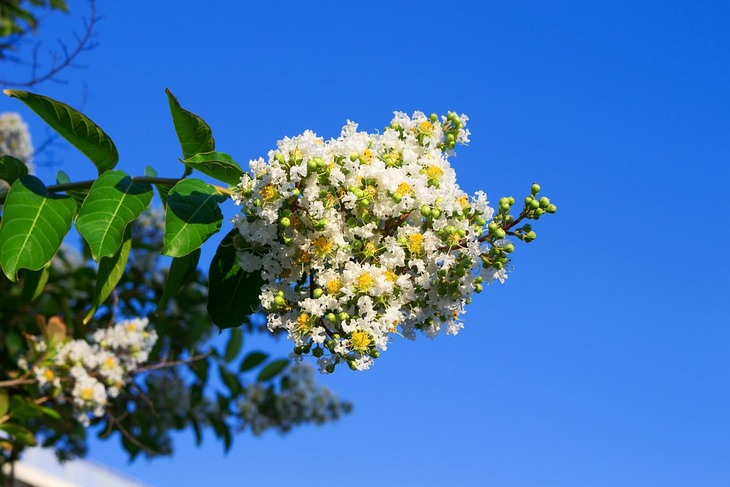
This flowering tree with attractive blooms will please your eye
3. Propagating Crepe Myrtles By Roots
Another method on how to propagate crepe myrtle is through root cuttings. They’re best done during early spring and then grown in either pot or in the ground. Root cuttings can be grown in rooting beds filled with compost. These cuttings should be planted at 4 inches in depth and at least 6 inches apart. This is to keep their roots well-misted.

Grow root cuttings of crepe myrtles in pots or directly in the ground
Here Are The Things You Need
- Knife
- Shovel
- Potting mix
- Pot
Step By Step Instructions
1. While your crepe myrtle is dormant in winter or late fall, dig around its root area until a section of the root is exposed. Using a knife, get pieces of roots about 2-4 inches long. For quick germination, take pieces of roots from the crown root area.
2. Plant your root cuttings upright in the pot with a damp potting mixture. Keep the top (the end closest to the crown root) up at soil level. There’s no need to use rooting hormone.
3. Settle the root cutting into the damp soil by watering it. How to propagate crepe myrtle successfully is by putting the pot under indirect sunlight and by protecting it from the wind. A cold frame or greenhouse is preferred.
4. Regularly water the root cutting. Transfer the pot under direct sunlight when stems and leaves start to appear. When the stems are several inches long, you may individually transplant the root cuttings to containers. Pour some liquid fertilizer on the new crepe myrtles. Transplant them to a permanent location during early spring.
Crepe myrtles grow in three different ways; tree (about 15-20 feet tall), shrub (5-7 feet tall), and dwarf (12-24 inches tall). There are many ways to grow your own crepe myrtles. If you plan to add more crepe myrtles to your property, these methods of propagating your own crepe myrtles are the easiest options. Growing crepe myrtle can be very fun and rewarding. Whatever method you choose, make sure to provide your crepe myrtle with its required water and sunlight.
Pin it!
